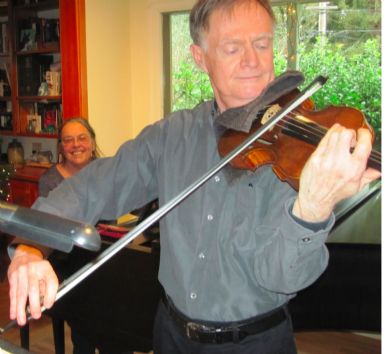|
Recital
ELEGANT VOCAL MASTERY AT ROSES SIGNATURE RECITAL
by Pamela Hicks Gailey
Sunday, February 25, 2024
Recital
DEMANDING SCHUMANN WORK IN MUSIC AT OAKMONT RECITAL
by Terry McNeill
Thursday, November 9, 2023
Recital
RARE RAVEL IN MENDO FESTIVAL'S PRESTON HALL
by Terry McNeill
Thursday, July 20, 2023
Recital
FRENCH FLAVOR IN RARE FOUR-HAND RECITAL
by Judy Walker
Sunday, January 15, 2023
Recital
ASSERTIVE PIANISM IN YAKUSHEV'S OCCIDENTAL RECITAL
by Terry McNeill
Sunday, November 13, 2022
Recital
HEROIC LIM PERFORMANCE AT STEINWAY SOCIETY RECITAL
by Abby Wasserman
Sunday, September 18, 2022
Recital
AGGRESSIVE PIANISM IN MYER'S MENDO FESTIVAL RECITAL
by Terry McNeill
Thursday, July 14, 2022
Recital
UNIQUE ELEGANCE IN GALBRAITH GUITAR RECITAL
by Gary Digman
Friday, April 29, 2022
Recital
ALLURING GLASS WORKS IN WEILL RECITAL
by Terry McNeill
Friday, March 25, 2022
Recital
FORGOTTEN BACH SHINES IN YARDEN'S OAKMONT RECITAL
by Terry McNeill
Thursday, March 10, 2022
|
 |
 Sonia Tubridy (l) and Richard Heinberg Dec. 30 in Guerneville |
HOME RECITAL BACH COMPLETES HOLIDAY SEASON
by Terry McNeill
Saturday, December 30, 2017
The just closing 2017 year was a calamity for many, but locally in music there were joys galore, and it was fitting Dec. 30 have the balm of two Bach’s violin sonatas in a private Guerneville home recital hosted by the eminent musician Sonia Tubridy.
Violinist Richard Heinberg joined Ms. Tubridy in a program that began with the C Minor Sonata, BWV 1017. Both the four-movements Sonatas featured judicious tempos and made minimal reference to current Baroque music practices of minimal vibrato, slight ritards and lower string-tension sound. Repeats were carefully taken and the sadness and lament character of much of the music came through clearly in the long opening largo and the third-part adagio. Balances were occasionally a problem with Ms. Tubridy’s piano line covering the violin part, and Mr. Heinberg’s intonation can waver in extended single notes.
In the complex second movement allegro the violinist’s trills were secure and the playing was agile and convincing. The allegro finale displayed a fugue that took time to develop, and the duo played deftly the many thematic transformations and inversions.
Finishing the afternoon was the E Major Sonata (BWV 1016), a more sunny work built on the same slow-fast-slow-fast movement structure as the C Minor. The beginning adagio was played romantically in a deliberate tempo, emphasizing the march-like rhythms, and the adagio ma non tanto had traits of a yearning love song, with a mysterious ending. There wasn’t a hint of schmaltz.
To sharp applause one encore was offered, the opening (andante) movement from the Bach A Major Second Sonata (BWV 1015).
Between the two Sonatas the duo adroitly demonstrated technical details of the works, including encompassing three lines (two separate ones in the piano and one in the violin line) and Bach’s frequent use of dissonance. The examples they presented of contrapuntal writing in the E Major’s second movement were especially enlightening.
|

